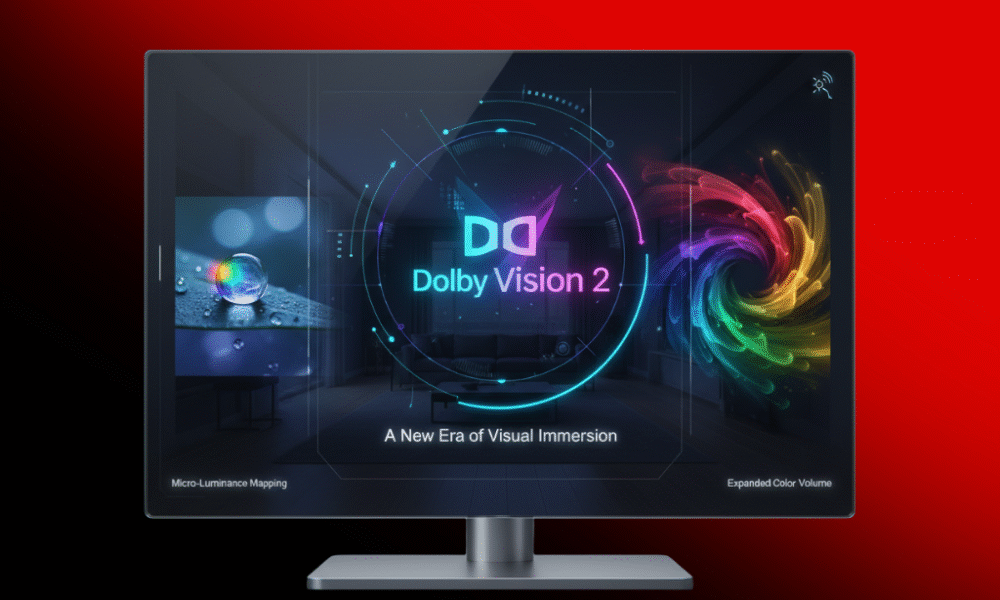Home Tech
Dolby Vision 2: A New Era of Visual Immersion Dawns

Dolby Vision 2
For years, Dolby Vision has been synonymous with premium visual experiences, pushing the boundaries of what’s possible in home entertainment and cinema alike. Its dynamic metadata, incredible contrast, and vibrant color reproduction have transformed the way we consume content, making every frame a feast for the eyes. But just when you thought it couldn’t get any better, word on the street (and through some whispers in the industry) is that Dolby Vision 2 is on the horizon, promising to usher in an entirely new era of visual immersion.
While official details are still under wraps, the mere mention of a “Dolby Vision 2” has set the tech world abuzz with speculation. What could this next generation of visual technology bring to the table? Let’s dive into what we might expect and why this could be a truly groundbreaking leap forward.
Beyond the Pixels: A Holistic Approach to Immersion
One of the most exciting prospects of Dolby Vision 2 is the potential for a more holistic approach to visual immersion. Dolby has always been at the forefront of understanding how the human eye perceives images, and Dolby Vision 2 is likely to build upon this expertise.
Imagine not just brighter highlights and deeper blacks, but a more nuanced and intelligent understanding of scene content. This could involve advanced AI-driven scene analysis that goes beyond current capabilities, perhaps even predicting how specific elements within a frame should be rendered to maximize perceived realism. This could lead to an almost three-dimensional quality without the need for specialized glasses, as the system intelligently manipulates light and color to create a more profound sense of depth.
Micro-Luminance Mapping and Sub-Pixel Control
Current Dolby Vision excels at dynamic tone mapping, adjusting brightness and color on a frame-by-frame basis. Dolby Vision 2 could take this to an unprecedented level with “micro-luminance mapping.” This would involve controlling individual areas of the screen with even greater precision, potentially down to groups of sub-pixels.
Think of it this way: instead of simply brightening an entire cloud in the sky, Dolby Vision 2 could subtly enhance the glint of sunlight on a single raindrop, or perfectly render the intricate variations in a flame. This level of granular control would unlock truly lifelike images, revealing details previously unseen and adding an almost tactile quality to visuals.
Expanded Color Volume and Next-Gen Gamuts
While current Dolby Vision boasts an impressive color gamut, Dolby Vision 2 is likely to embrace even wider color volumes and next-generation color spaces. This isn’t just about more colors, but about greater fidelity and accuracy across the entire spectrum. Imagine richer, more vibrant hues that are indistinguishable from real life, with subtle gradations that avoid any banding or artifacting.
This could be particularly impactful for content creators, allowing them to express their artistic vision with an even broader palette. For viewers, it means a more visually captivating experience, bringing the filmmaker’s intent even closer to reality.
Adaptive Viewing and Environmental Intelligence
Another exciting possibility for Dolby Vision 2 lies in its potential for “adaptive viewing.” Imagine a system that not only understands the content on screen but also intelligently assesses your viewing environment. This could involve sensors that detect ambient light levels, color temperature, and even reflections, dynamically adjusting the image to maintain optimal visual quality regardless of your surroundings.
This would be a game-changer for casual viewers, ensuring a consistently stunning experience whether you’re watching in a brightly lit living room or a dimly lit home theater. The technology would seamlessly adapt, making sure every detail and every nuance of the image is perfectly preserved.
Beyond the TV: The Future of All Screens
While the initial focus for Dolby Vision 2 will undoubtedly be on premium televisions and projectors, its influence is likely to extend far beyond. We could see its principles applied to smaller screens like smartphones and tablets, bringing a new level of visual fidelity to mobile content consumption. Furthermore, its advanced capabilities could significantly impact professional applications, from medical imaging to architectural visualization, where absolute visual accuracy is paramount.
The Anticipation Builds
The arrival of Dolby Vision 2 represents more than just an upgrade; it signifies a new frontier in visual technology. It’s about transcending the limitations of current display capabilities and delivering an experience that is truly immersive, nuanced, and breathtakingly real. While we eagerly await official announcements and demonstrations, the promise of Dolby Vision 2 already has us dreaming of a future where every screen is a window to unparalleled visual wonder. Get ready, because the way we see the world is about to change, yet again.
What features are you hoping to see in Dolby Vision 2? Let us know in the comments below!
For the best of Home Tech Review, you can’t go wrong here at TheTechReview